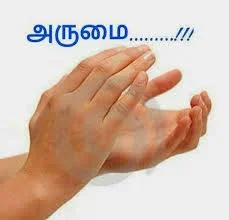tks
0
The actual characters in Valmiki Ramayana with meat consumption in the forest may be less appealing than the embellished version that people may have in mind.
There are verses in Valmiki Ramayana where Rama says he will live mainly on fruits, vegetables etc to his mother. The fact they ate meat may not be palatable to some people.
That is why history centric analysis of Itihasa is not useful for us.
The answer as to who is Rama is that he represents the perfection of a what a human being can strive for in abiding by Dharma. This may or may not be entirely true for the actual historic figure.
But the embellished version and evolved version over the eons is probably most helpful when one chants Rama Nama in meditation. In that sense we have to thank the people who may have changed the facts over the centuries.
At a time when corruption across the world is rampant, it is so refreshing to read about a story where a powerful king of the continent could not bring himself to lie regarding the boon he gave in a battlefield where there were no witnesses. He could have easily said he did not mean what he had said then but he could not bring himself to contradict the word he had given. He ended up dying rather than reverse his word.
The son, Rama ready to take the harshest life of living in forest, just so his father's word is kept is just supremely movinh. In fact before Sri Rama left for forest he liquidated all this belongings by giving them away as per Valmiki's description.
This idealized version of Rama standing for the power of the spoken word with no witnesses, and for doing the right things is the only real Rama there is. It lives only in the minds of people. This is my answer to the question of the thread.
It is immaterial if the historic figure matches the idealized version we have in our mind.
There are verses in Valmiki Ramayana where Rama says he will live mainly on fruits, vegetables etc to his mother. The fact they ate meat may not be palatable to some people.
That is why history centric analysis of Itihasa is not useful for us.
The answer as to who is Rama is that he represents the perfection of a what a human being can strive for in abiding by Dharma. This may or may not be entirely true for the actual historic figure.
But the embellished version and evolved version over the eons is probably most helpful when one chants Rama Nama in meditation. In that sense we have to thank the people who may have changed the facts over the centuries.
At a time when corruption across the world is rampant, it is so refreshing to read about a story where a powerful king of the continent could not bring himself to lie regarding the boon he gave in a battlefield where there were no witnesses. He could have easily said he did not mean what he had said then but he could not bring himself to contradict the word he had given. He ended up dying rather than reverse his word.
The son, Rama ready to take the harshest life of living in forest, just so his father's word is kept is just supremely movinh. In fact before Sri Rama left for forest he liquidated all this belongings by giving them away as per Valmiki's description.
This idealized version of Rama standing for the power of the spoken word with no witnesses, and for doing the right things is the only real Rama there is. It lives only in the minds of people. This is my answer to the question of the thread.
It is immaterial if the historic figure matches the idealized version we have in our mind.


